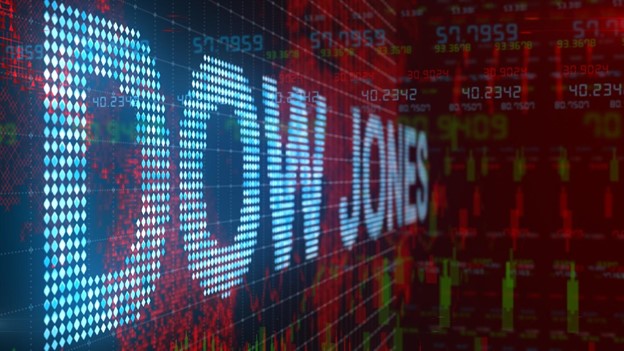Markets began a potential bottoming process on May 12. Support levels started to form in a sideways consolidating pattern. The fallout from the Fed’s rate hike a week earlier eased.
Markets had aggressively corrected with the Nasdaq deep in bear territory and the S&P edging closer to the designation. Which direction do we go from here?
Participants prepared for the next wave of news to determine if the selling had finally been exhausted. This was to come in the form of retail and April-end tech reports.
Last week, Target (TGT) and Wal-Mart (WMT) provided stark warnings about the environment. The markets digested the news rather calmly, and support levels for broader indices remained in play. Had the market appropriately priced in expected declines for corporate performance?
Last night, participants were thrown a curveball which will put support levels to the test.

Snap presented at J.P. Morgan’s 50th Annual Global Technology, Media, and Communications Conference. It downgraded its outlook and warned of a difficult environment in digital ad spending.
The timing of the warning caught the market off guard. SNAP just reported four weeks ago on April 21. The lower guidance and commentary suggest the environment deteriorated at a faster pace than most expected.
Shares of SNAP crumbled 40% in reaction to the news. This was on top of the 40% decline since its earnings report. It would appear the market had more work to do on the sell-side.
SNAP positions itself as a camera company focused on improving the way people live and communicate. The market views it as a harbinger of consumer spend due to its advertising-driven model.
It has 332 million daily active users. 250 million DAUs engage on the platform every day. This creates 6 billion lens plays daily offering a nice platform for digital advertisers. SNAP had revenue north of $4 billion in 2021
SNAP provided its initial outlook on April 21. Markets were more concerned with the poor Amazon (AMZN) earnings that day. In its Q1 report, Snap forecasted Q2 revenue growth of 20-25% y/y which was a deceleration from 38% growth posted in Q1. It projected EBITDA to be between breakeven to $50 million.
The company updated this outlook at the JPM conference. It stated, “the macroeconomic environment deteriorated further and faster than we expected when we issued our Q2 guidance… revenue and EBITDA will come in below the low end of our guidance range”.

SNAP said it is working through issues impacting the business including supply chain constraints, rising interest rates, and war in Ukraine. We would also note SNAP is more vulnerable to the Apple iOS issues which will be factored in by the market. The company has made progress on first-party and direct response solutions but not enough to offset headwinds.
It previously stated that 2022 would be an investment year as it moves away from reliance on AAPL. Snap plans to continue to spend as it sees long-term benefits, but it did say it would slow down the pace of hiring due to the slowdown in business.
The company discussed the importance of building trust with advertisers and consumers which would drive more opt-in engagement under the new advertising model. This trust takes time to build and investors may not have the patience to wait around.
The timing of the build-out, coupled with the slow down in demand will clip margins at both ends of the spectrum.
This is an early pre-announcement. It does not bode well for the digital advertising space. It will be a headwind for traditional media, e-commerce, and the broader tech space. The general view on tech is that it is not as exposed to inflation. The news from SNAP suggests otherwise.
The news will spark a debate on how much this is SNAP-related compared to the space. SNAP has a younger demographic which will be more exposed to inflation. It derives more revenue from Europe which has been impacted directly by the war in Ukraine.
As for the broader digital ad space, it will remain a difficult place for buyers until companies print Q2 numbers and provide outlooks for the third quarter. Investors will assume the worst until they are provided signs that the environment is improving.
The debate around this being SNAP-specific will rage for the next few weeks. There will be volatility in the space and traders will need to watch price action for opportunities.
Here are a few names to watch:
Alphabet (GOOGL)- Watch for a test of the key $2000 psychological number. It has a broad platform and more revenue streams than SNAP. This is a long-term buy if it gets to $2000.
Twitter (TWTR)- We are still waiting for the Elon Musk tweet with regards to this news. It is fascinating to see this trade at $36, well below the $54 Musk originally offered. The market certainly does not see this deal going through at that price. We would not touch this stock in the current state.
Pinterest (PINS)- This stock rallied 15% over the past two weeks. That move was erased, and we are back to all-time lows. PINS is probably the best comp for SNAP so we would expect any rebound to be marginal at best.
Meta Platforms (FB)- Shares of FB have been fighting to hold the $170-200 area since it reported earnings in mid-April. FB has been impacted by the AAPL changes but it already started the process of building out its own platform to ease the pain. The stock has slipped back to the $170 area, down 8% on the heels of the SNAP news. This makes for an intriguing entry if it can continue to hold.
Amazon (AMZN)- The news suggests e-commerce spending remains depressed. This will do little to improve sentiment around AMZN. But, like Alphabet, it is coming in to test that key $2000 psyche level. The stock is also closing in on its 20-for-1 split which could entice some buyers off the sidelines. We would be buyers of AMZN in the $2000 area.



